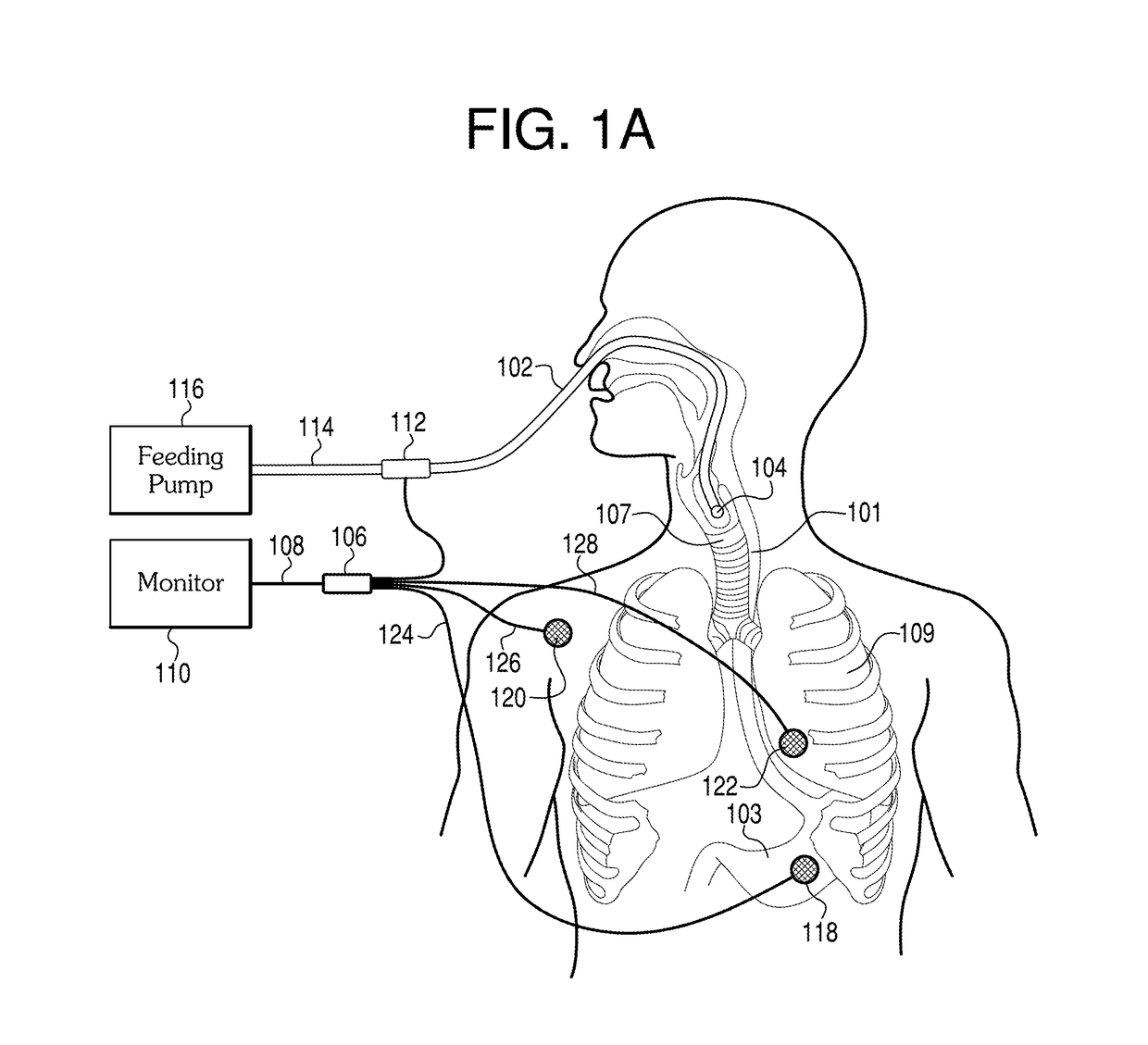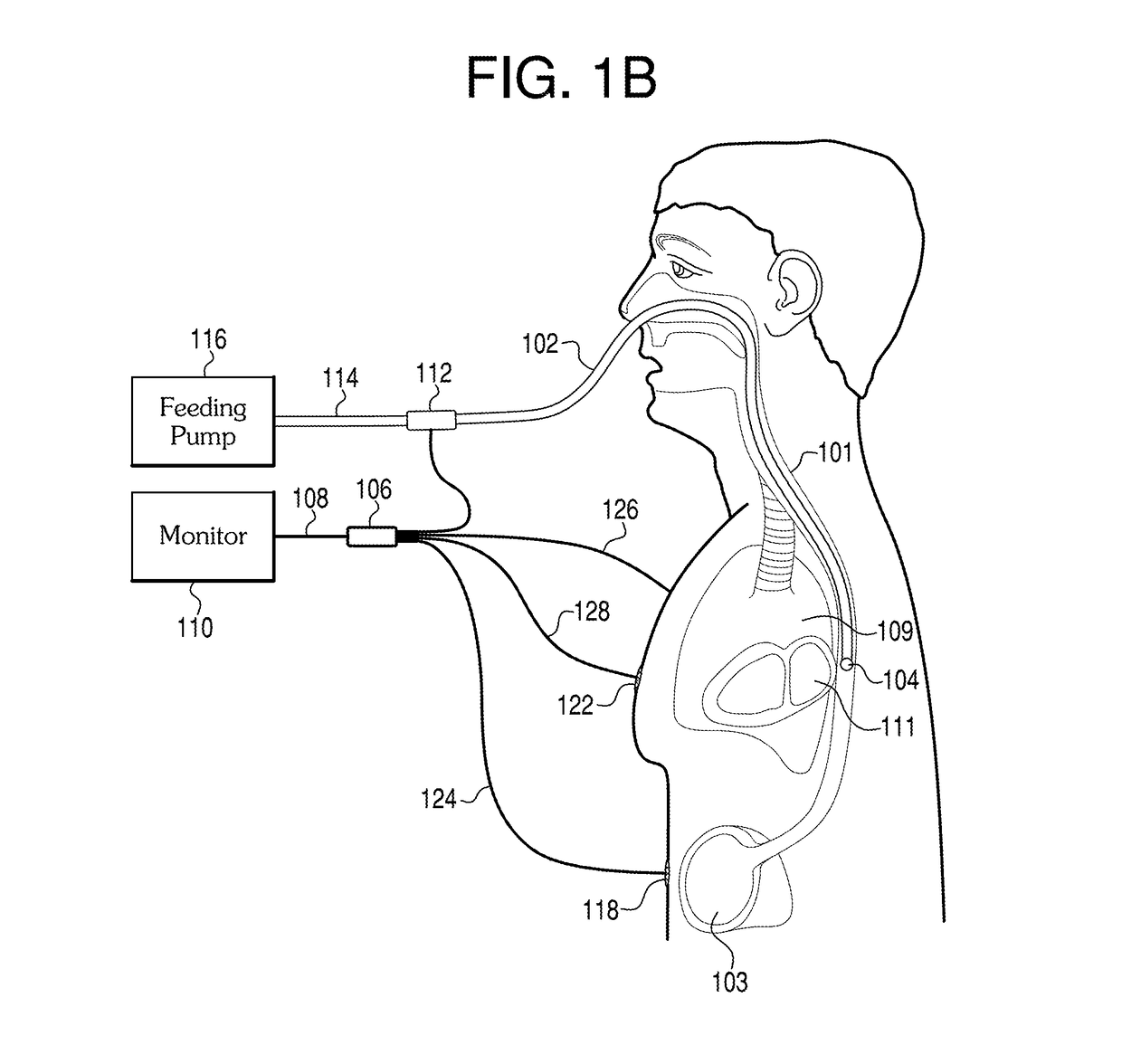Methods and apparatus for guiding medical care based on sensor data from the gastrointestinal tract
a sensor data and gastrointestinal tract technology, applied in the field of methods and equipment, can solve the problems of affecting the treatment of patients, so as to achieve the effect of avoiding complications, reducing the risk of pneumonia, and slowing down the change of physical characteristics back to baselin
- Summary
- Abstract
- Description
- Claims
- Application Information
AI Technical Summary
Benefits of technology
Problems solved by technology
Method used
Image
Examples
Embodiment Construction
[0081]For convenience of explanation, exemplary embodiments are described below with reference to the figures in the context of placing feeding tubes, assessing gastric motility, and monitoring reflux in acute care patients.
[0082]A table of contents of some embodiments specifically disclosed in the Detailed Description is provided below.
[0083]I. Feeding Tube Location System and Apparatus[0084]A. Determine Tube Location Using Acoustic Sensor[0085]B. Determine Tube Location Using Magnetic Field Sensor
[0086]II. Motility Measurement System and Apparatus[0087]A. Determine Motility Using Acoustic Sensor[0088]B. Determine Gastric Residual Volume Using Temperature Sensor[0089]C. Determine Gastric Residual Volume Using Bioelectrical Impedance[0090]D. Determine Motility Using Impedance Sensors
[0091]III. Reflux Measurement System and Apparatus[0092]A. Reflux Measurement System[0093]B. Feeding Tube Design[0094]C. Monitor Cable Design[0095]D. Suction and Feeding Pump Connector Design[0096]E. Mon...
PUM
 Login to View More
Login to View More Abstract
Description
Claims
Application Information
 Login to View More
Login to View More - R&D
- Intellectual Property
- Life Sciences
- Materials
- Tech Scout
- Unparalleled Data Quality
- Higher Quality Content
- 60% Fewer Hallucinations
Browse by: Latest US Patents, China's latest patents, Technical Efficacy Thesaurus, Application Domain, Technology Topic, Popular Technical Reports.
© 2025 PatSnap. All rights reserved.Legal|Privacy policy|Modern Slavery Act Transparency Statement|Sitemap|About US| Contact US: help@patsnap.com



